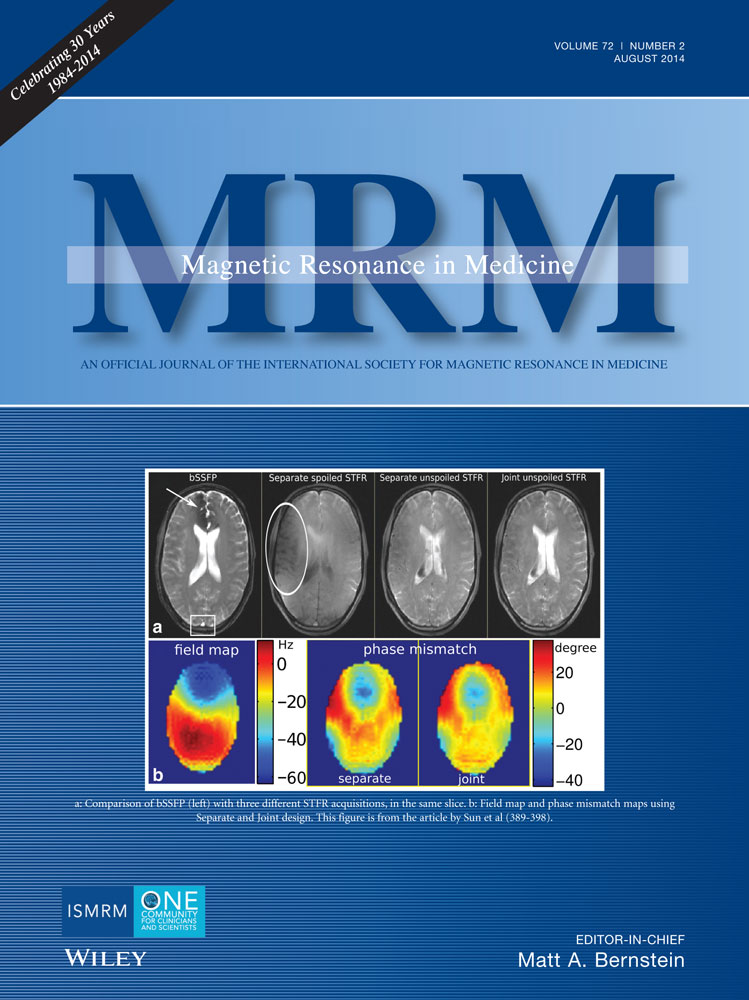Phase reconstruction from multiple coil data using a virtual reference coil
Abstract
Purpose
This study develops a method to obtain optimal estimates of absolute magnetization phase from multiple-coil MRI data.
Theory and Methods
The element-specific phases of a multi-element receiver coil array are accounted for by using the phase of a real or virtual reference coil that is sensitive over the entire imaged volume. The virtual-reference coil is generated as a weighted combination of measurements from all receiver coils. The phase-corrected multiple coil complex images are combined using the inverse covariance matrix. These methods are tested on images of an agar phantom, an in vivo breast, and an anesthetized rabbit obtained using combinations of four, nine, and three receiver channels, respectively.
Results
The four- and three-channel acquisitions require formation of a virtual-reference receiver coil while one channel of the nine-channel receive array has a sensitivity profile covering the entire imaged volume. Referencing to a real or virtual coil gives receiver phases that are essentially identical except for the individual receiver channel noise. The resulting combined images, which account for receiver channel noise covariance, show the expected reduction in phase variance.
Conclusion
The proposed virtual reference coil method determines a phase distribution for each coil from which an optimal phase map can be obtained. Magn Reson Med 72:563–569, 2014. © 2013 Wiley Periodicals, Inc.




